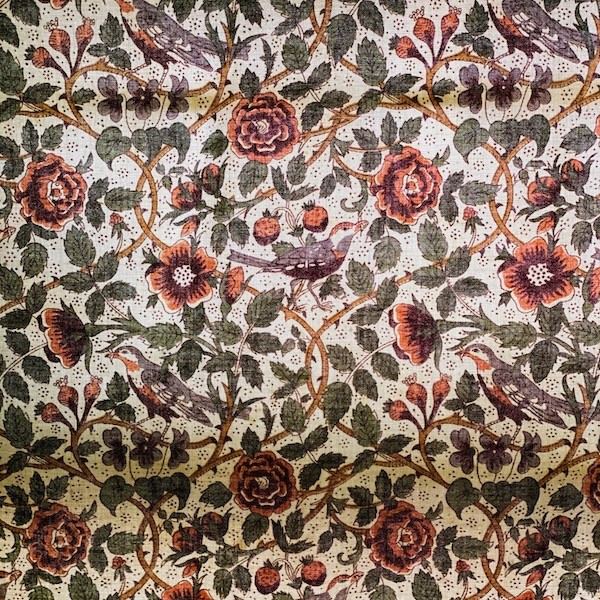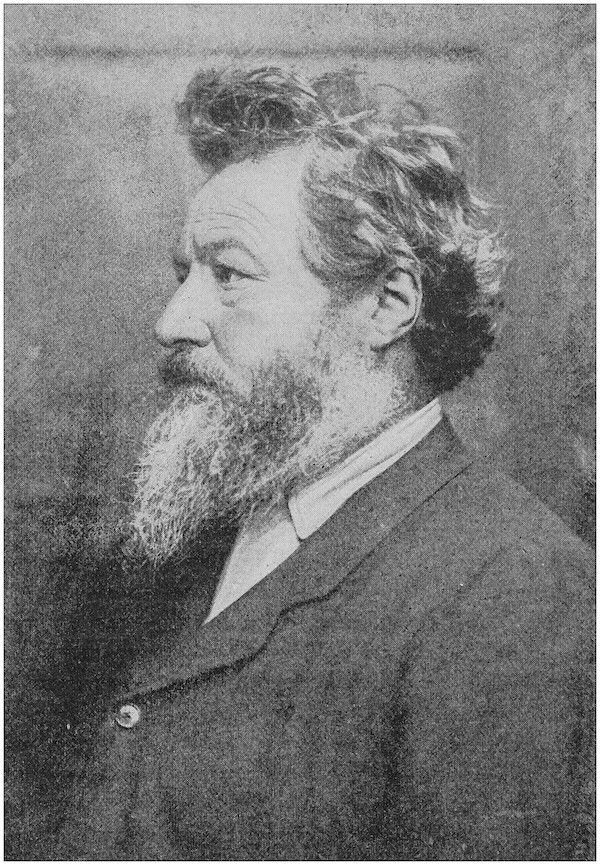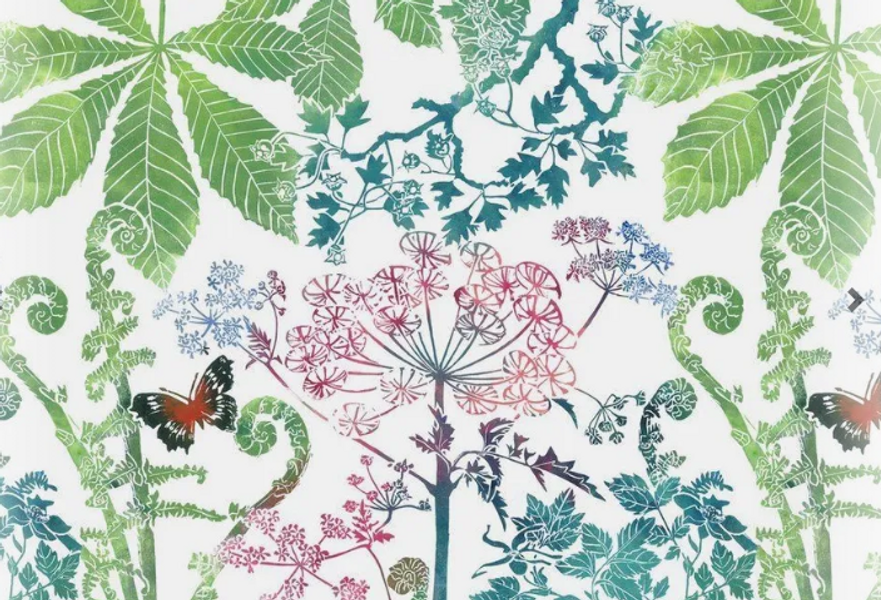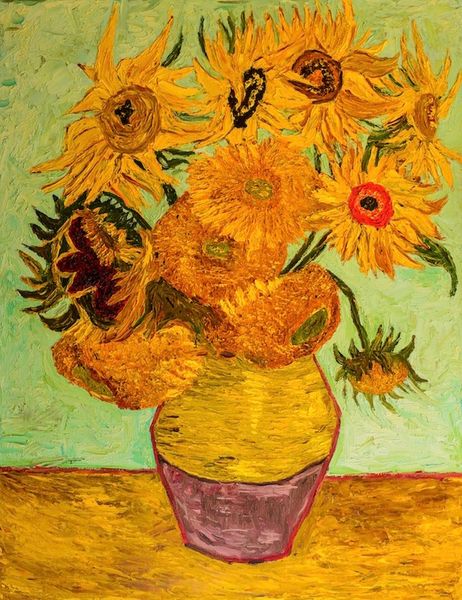Today is the birthday of William Morris, father of the Arts & Crafts movement and a total legend in our view.
Born in 1834, the famously beardy revolutionary is the creative genius behind so many gorgeous prints we know and love. Like the ‘Strawberry Thief’ vintage fabric that hung as curtains in my Mum’s house for decades before I nabbed it to make a roman blind for my kitchen window. These prints are timeless and classic, and I cherish the design every time I look at it, if not the slightly wonky craftsmanship. Roman blinds being sheer murder to make, and you need maths degree at least to get it folding right.

A roman blind I made from some curtains my Mum had, in the 'Strawbery Thief' design.
William Morris was an Essex boy, one of 10 children with only 3 surviving into adulthood. An unimaginable level of loss in our modern times. It was not the easiest of childhoods; his mother kept him at home and his father died unexpectedly when he was 13. It does lead us to wonder how much the hardship endured by young Morris (or any of us) contributes to creative genius.
 William Morris, arts & crafts Legend
William Morris, arts & crafts Legend
An unhappy student at the aristocratic Marlborough College (which does look pretty severe to be honest), Morris went on to Oxford University, where he met his lifelong friend Edward Burne-Jones (more on him, here!) , the famously shocking sensual painter. We can see why these two took a liking to each other!
The pair of them at one point decided to be clergymen and take vows of chastity. Perhaps luckily for the young ladies of the era, this plan was abandoned when he and Burne-Jones took a trip across France and dedicated themselves to a life of Art rather than religion. Which was a gift for us all in my view but lead to strained relations with his family sadly.
 Peacock and Dragon, woven fabric, 1878, William Morris
Peacock and Dragon, woven fabric, 1878, William Morris
Morris met his muse and future wife the embroiderer Jane Morris (nee Burden) in 1857 and they married two years later and had two daughters. Morris built The Red House in Bexleyheath, now a National Trust property, for his family and decorated it with painted murals and exquisite embroidery by his friends, the likes of Burne-Jones, Dante Gabriel Rossetti, Elizabeth Siddal and Phillip Webb… the kind of friends you can trust with a paintbrush to say the least.
Morris deemed crafts such as weaving, embroidery, dyeing and calligraphy to be on the same level as fine art, which was controversial back then, perhaps still even today in certain circles we will not mention!
All handcraft was championed and cherished (quite right too) and Morris was a huge advocate of enabling the worker to attain the status of ‘artist’ a noble endeavour if ever there was one.
 The Red House, Bexleyheath, built by William Morris and Phillip Webb
The Red House, Bexleyheath, built by William Morris and Phillip Webb
Morris was a founder of The Firm, a group of art and crafts people based in Bloomsbury London. Intent on reinstating practical craft and art as fine art and staunchly against elitism, they wanted beauty and art to become affordable for all – an attribute we admire greatly and believe had a marvellous ripple affect around the world. The Firm produced murals, furniture, architectural carving, metalwork and worked on projects at St James’ Palace and what is now the Victoria & Albert Museum. Of course their stained glass windows were a flyaway success and enjoy global renound in churches and building across the United Kingdom.
Morris took an active and eagle-eyed interest in the weaving, dyeing and construction process of his textile designs, emphasising the beauty of organic dyes, and the colours and forms of the natural world – which is what I think I am drawn to most of all in his work and the recreation of paradise on our Earth. A man clearly fascinated by the wonders of the natural world and drawn to beauty in all its myriad forms.
 Acanthus, 1879-1881, by William Morris
Acanthus, 1879-1881, by William Morris
We cannot focus only the practical arts of this great man; however, without mentioning Morris’ poetry. Drawn to legend and divine beauty, Morris revered the Greek Mythology, Arthurian and Medieval tales and Nordic folklore. Being a Welsh organisation, we particularly relish his poem Love is Enough, based on the Celtic mythological classic, the Mabinogion, the oldest story in British history.
His famous poem The Earthly Paradise tells the story of a band of adventurers who leave Europe to escape the Plague (sounds rather appealing doesn’t it?) and discover an island where people worship the Greek Gods. I don’t know about you, but I have travelled through Greece and I can fully see why they call it the land of the Gods… the light over there! My goodness. But back to Morris…
 Morris design book cover, image by fragolinasewingcraft
Morris design book cover, image by fragolinasewingcraft
What emerges from our reading is a straight-talking, unpretentious individual with great friends and a strong sense of beauty, justice and integrity. Oh, and crazy hair.
A legend indeed - Happy birthday William, we salute you!
And from our Welsh roots, Penblwydd hapus too!
 Snakeshead, 1876-77, William Morris
Snakeshead, 1876-77, William Morris



